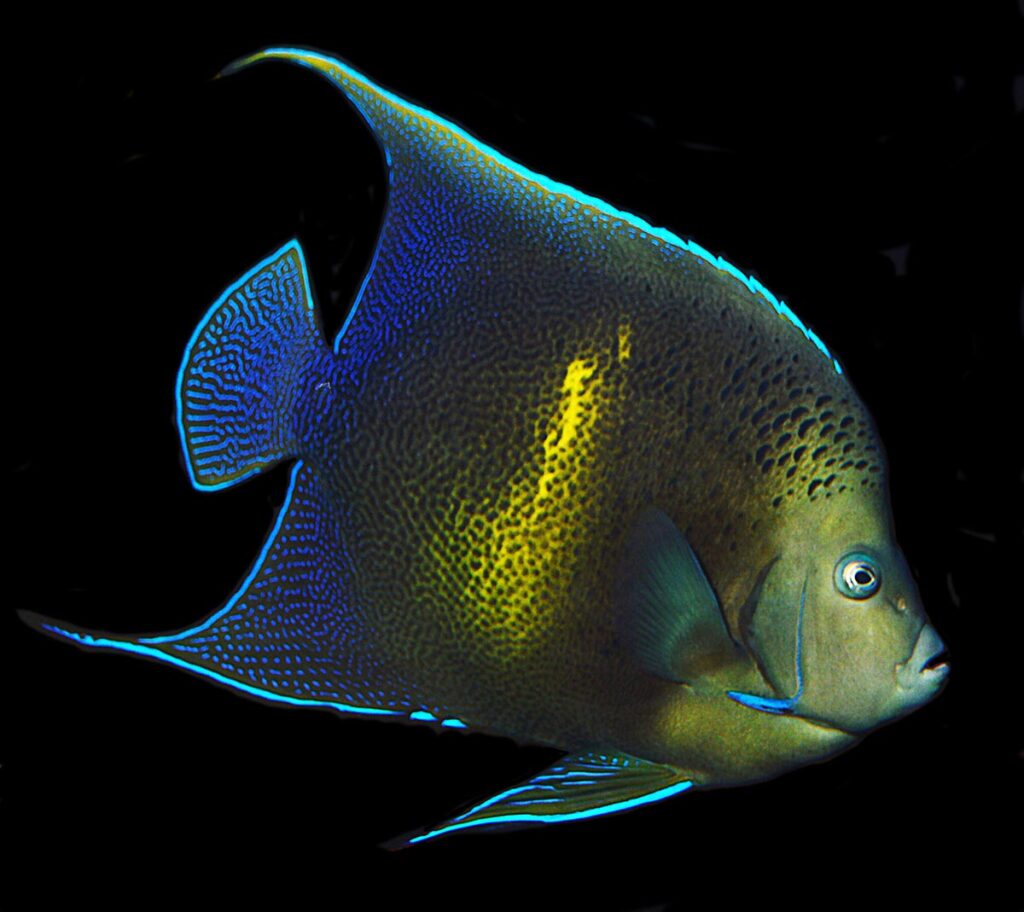
It’s pretty incredible to think that just as the Covid-19 Pandemic was breaking into our mainstream awareness, thousands of people were gathering in Orlando, Florida, for 2020’s Global Pet Expo. Notably absent at the event? All the attendees and vendors from China.
It turns out that Tampa International was one of the last airports I stepped foot in during 2020, and while looking through some of those photos from the convention, I was reminded of a story that I forgot to tell, until today.
Fans of the old Animal Planet show “Tanked” may recall a 2016 episode featuring the installation of a 1,300-gallon cylinder aquarium in the Tampa International terminal that houses Rumfish Grill. Chuckling over the notion that the tank showcased “indigenous fish” (while the actual assemblage is dominated by fish from the Indo-Pacific, the locals playing bit parts), I have to point out that there is another aquarium at the airport. It is far more prominent and accessible but hasn’t necessarily received much attention.
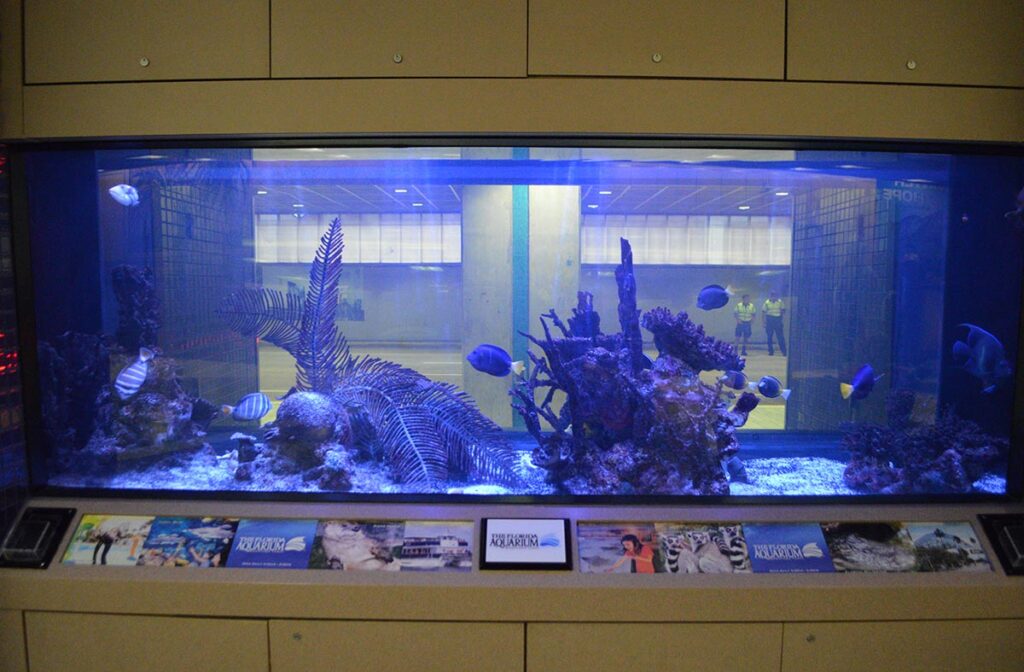
I’m talking about the very large indoor-outdoor marine aquarium on the baggage claim level, a display for The Florida Aquarium. There aren’t many mentions of this aquarium online, but over the years a couple people have taken a moment to admire and document the display.
Update: Steve Bitter, a professional aquarist at the Aquarium at the Boardwalk in Branson, MO, and former aquarist with The Florida Aquarium, noted that there are not one, but two baggage claim display aquaria at Tampa International Airport. One showcases Atlantic fishes, the other Indo-Pacific & Red Sea fishes.
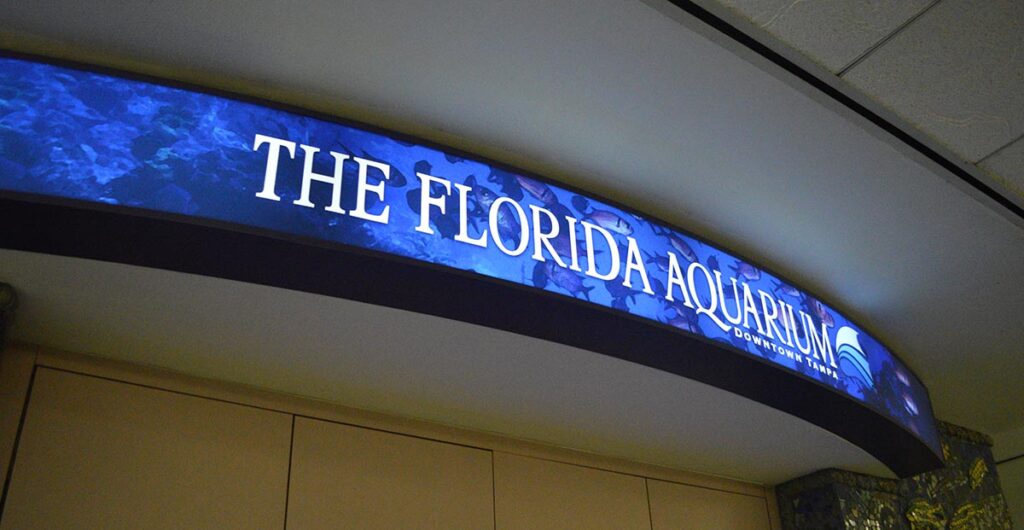
This video from 2016 gives a glimpse into what is likely the Red Baggage Claim aquarium, showcasing iconic Florida natives, including Bluehead Wrasses (Thalassoma bifasciatum), Spotfin Butterflyfishes (Chaetodon ocellatus), and a Gray Angelfish (Pomacanthus arcuatus), among others.
When I visited on February 25, 2020, traveling on Delta, I came though the Blue Baggage Claim area, and was treated to this unique display featuring Pacific Fishes.
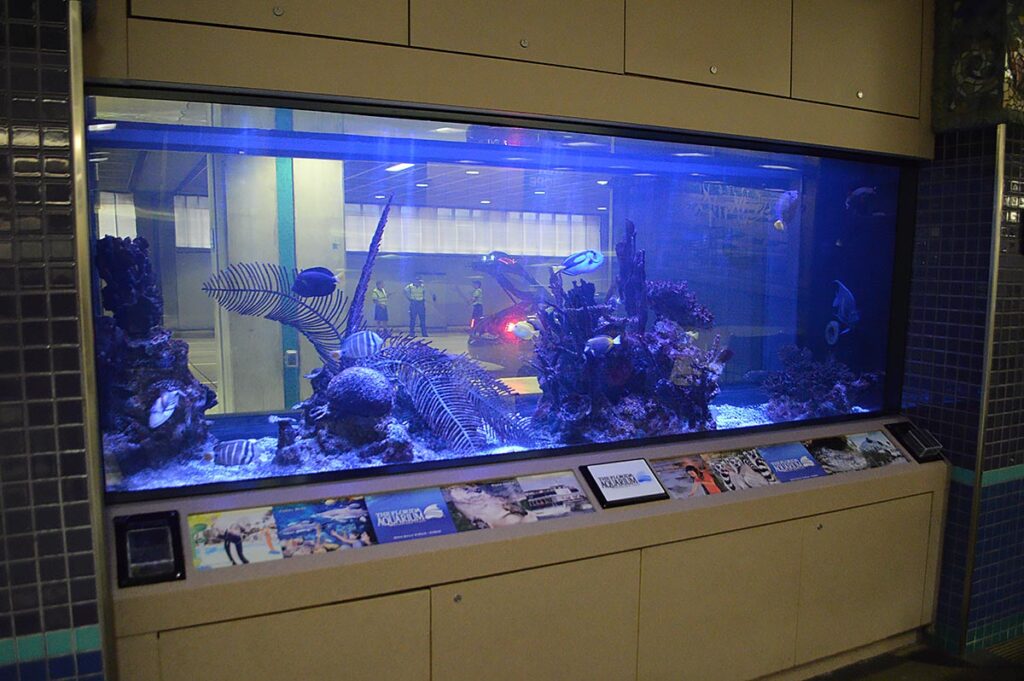
At first glance, the indoor-outdoor tank was rather unremarkable, except for its size. Peering into the blue-illuminated waters, I encountered a routine assemblage of saltwater favorites, predominantly acanthurids (tangs & surgeonfishes), including Purple Tangs (Zebrasoma xanthurum), Yellow Tangs (Z. flavescens), Sailfin Tangs (Z. velifer), Powder Brown Tangs (Acanthurus japonicus), and a Regal Blue Tang (Paracanthurus hepatus). A Picasso Triggerfish (Rhinecanthus aculeatus) stood out in stark contrast to all the tangs.
And there was one massive angelfish. From far away you might not realize just how unique and special this fish is. Countless people must walk on by, oblivious to the unique fish on display. Of course, this angelfish did its best to go unnoticed, placing itself behind the tank’s decor, particularly when I raised my camera.
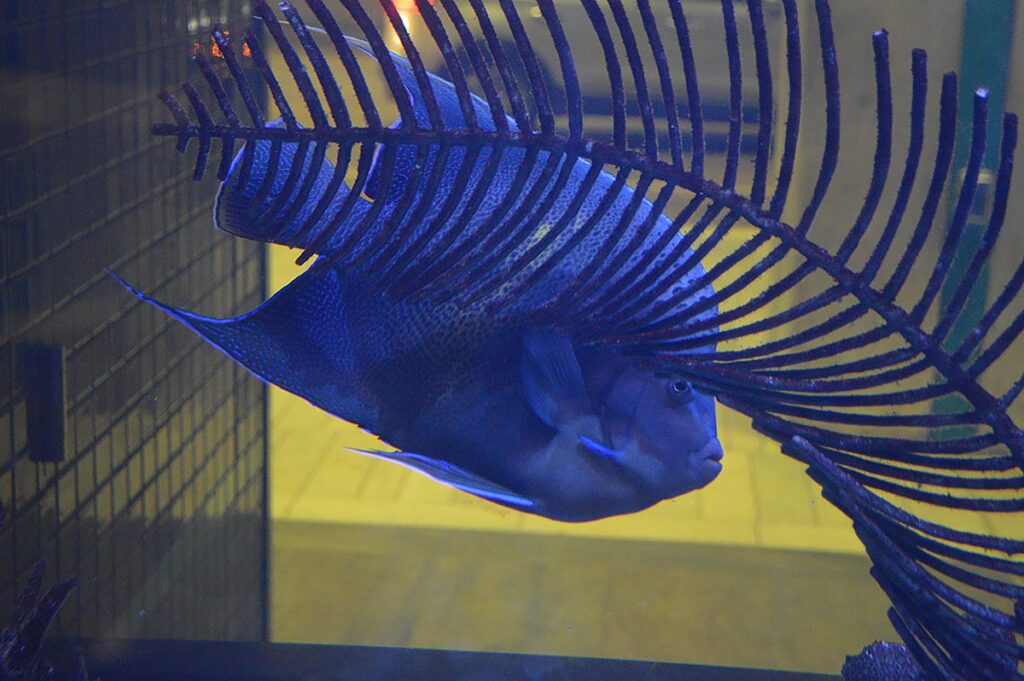
The ambient surroundings didn’t make photography any easier. The thick walls of the tank and numerous reflections from external elements combined with the lack of any background made it difficult to capture aesthetically pleasing results. Utilizing a hand-held external flash helped to remove the blue cast over everything, revealing the true color of the angelfish.
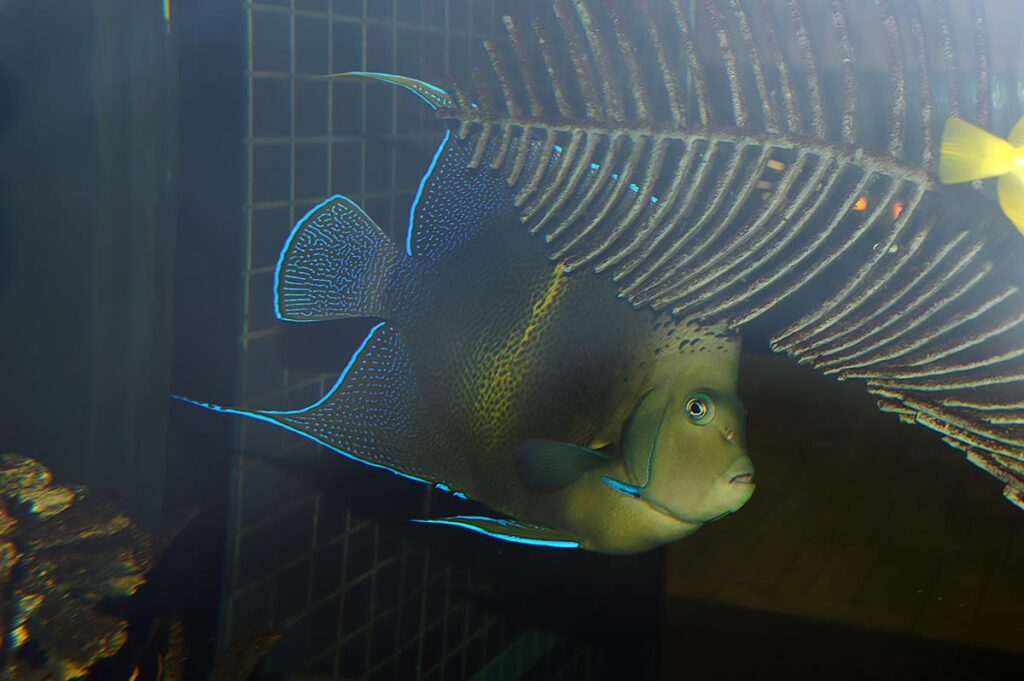
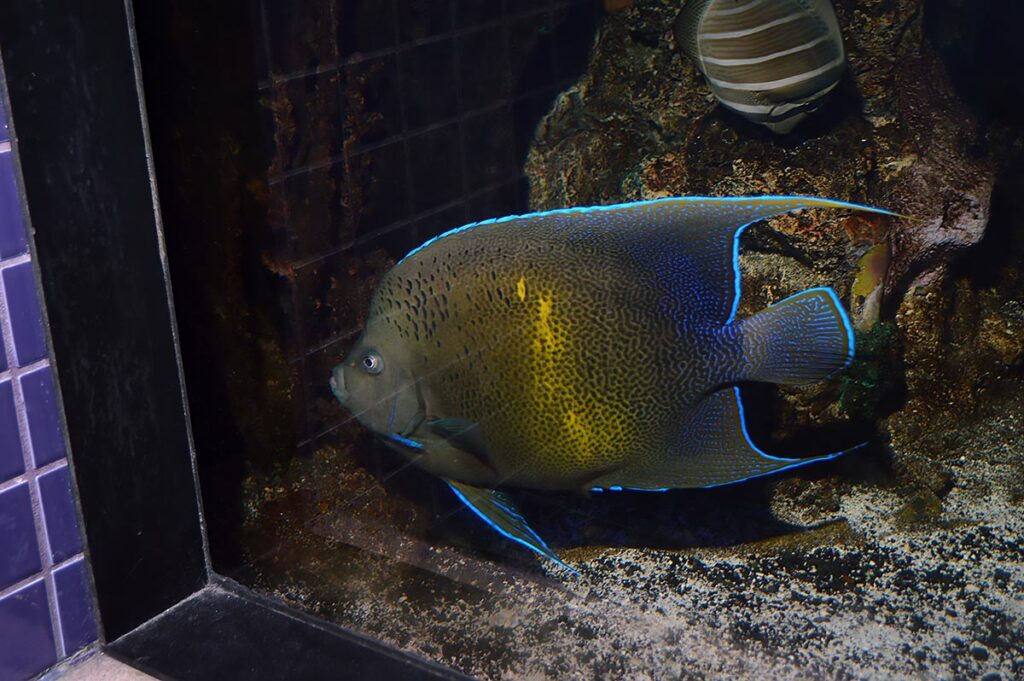
I was fortunate that my ride was a little bit behind schedule, which gave me time to figure out how I could get decent photos in this situation. Avoiding the ends of the tanks was the first step, as those external tiles created distractions and reflections that I couldn’t avoid. The front-to-back depth of the tank also created issues; my camera often didn’t want to focus on the fish.
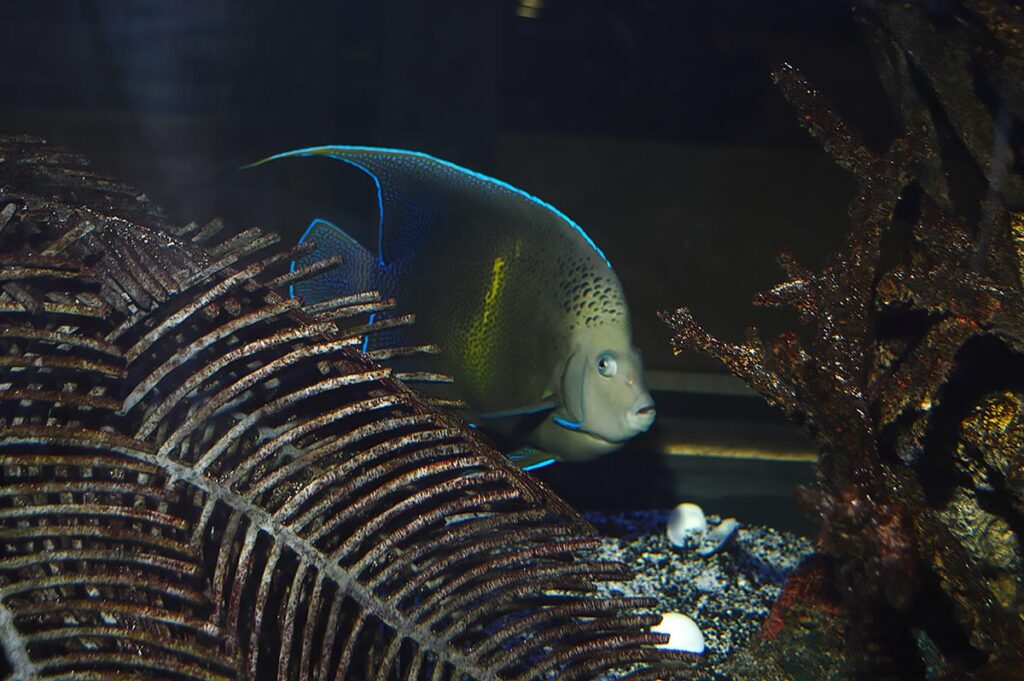
The middle of the tank proved better, and with the right positioning of my external flash, I was able to “shoot in the black,” utilizing flash falloff to illuminate the fish while de-emphasizing all the distractions from the outdoor background, where cars and people were constantly passed by.
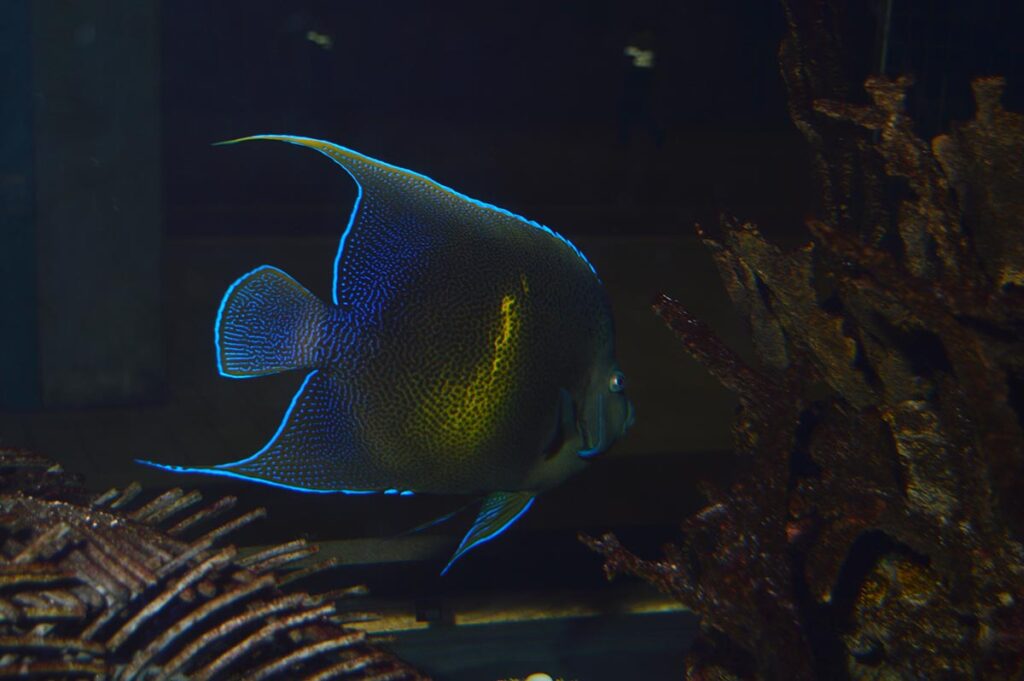
It became a waiting game. There was only one acceptable location in the overall tank where decor and external chaos weren’t prominent. I had to wait for the fish to present itself there so I could capture a decently unobstructed view.
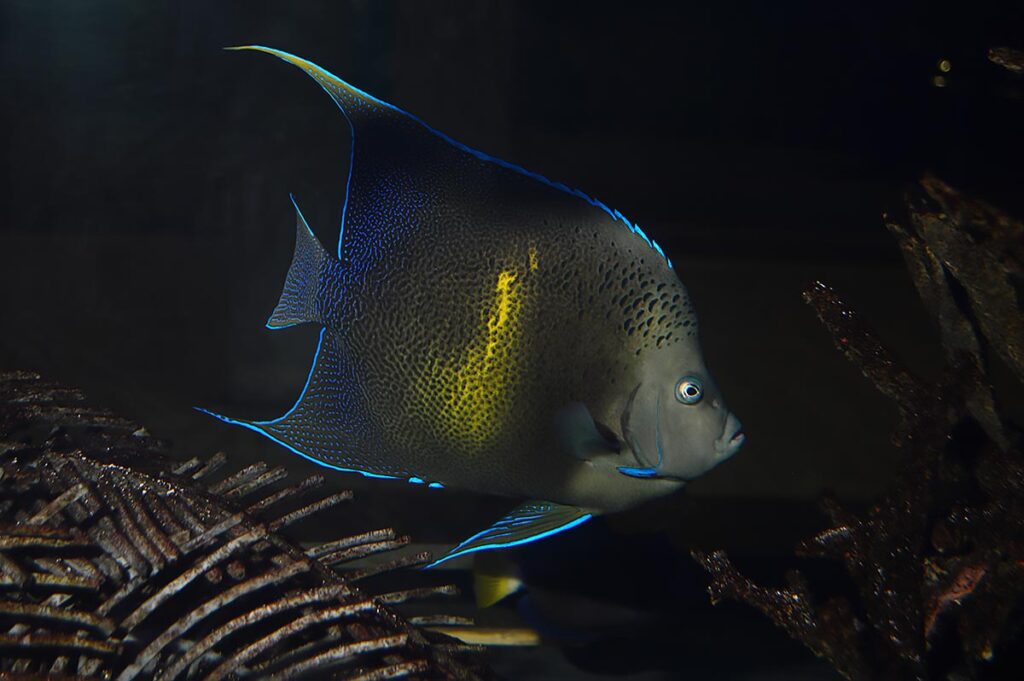
Patience, determination, and on-the-fly review of the photos within the camera all helped me get closer to passable results. I can’t say I got perfect images of this spectacular fish, but I’m happy with the results.
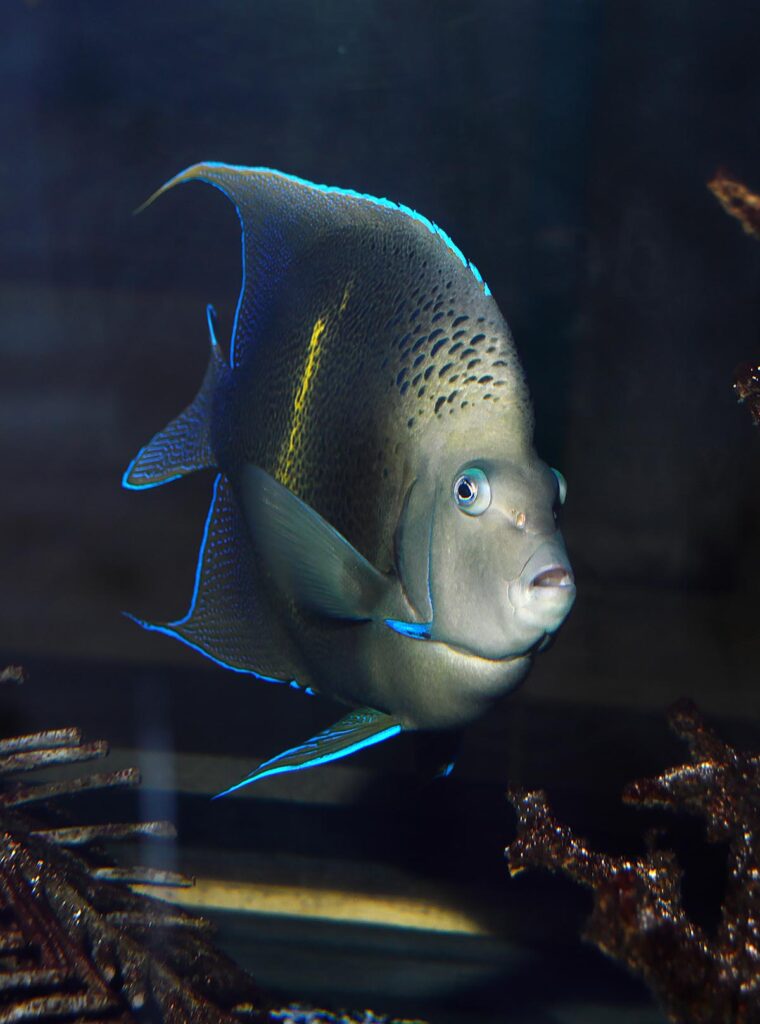
Ultimately, I managed to obtain a few good photos, which I worked on while waiting for my ride to pick me up. Sharing the photos later that evening with Dr. Matthew L. Wittenrich (now of Poma Labs), it quickly became clear that this was likely one of the Pomacanthus angelfish that were reared at the Tropical Aquaculture Laboratory (TAL) at the University of Florida as part of the Rising Tide Conservation program.
This massive angelfish likely stemmed from egg-collection efforts at the Columbus Zoo & Aquarium. Eggs were collected from a display and shipped to TAL for rearing, although Wittenrich and his team didn’t always know what they were working with. Rising Tide published an update on these early efforts in 2015, documenting what appeared to mainly be Pomacanthus maculosus, but at least one specimen clearly didn’t fit the standards for that species. Its parentage was uncertain at the time, although there were only a handful of contenders.
Meet a Hybrid Angelfish
It is abundantly clear now that the fish on display was one of only a handful of mixed-species Angelfish that were reared during these early Rising Tide efforts in 2011 and 2012, placing this resplendent beast at an age of 8 or 9 years.
It’s also apparent exactly who its parents were. In addition to the bright yellow slash down its flanks and some large dark spots on the forehead, both traits of the Maculosus, Yellowbar, or Map/Mac Angelfish (Pomacanthus maculosus), the bulk of this fish still echoes its other parent, the Koran or Semicircle Angelfish (Pomacanthus semicirculatus). The wide-ranging Koran Angel does occasionally hybridize with the Maculosus in the wild, but overall these fish are truly a rarity, and I suspect there are only a handful in captivity.
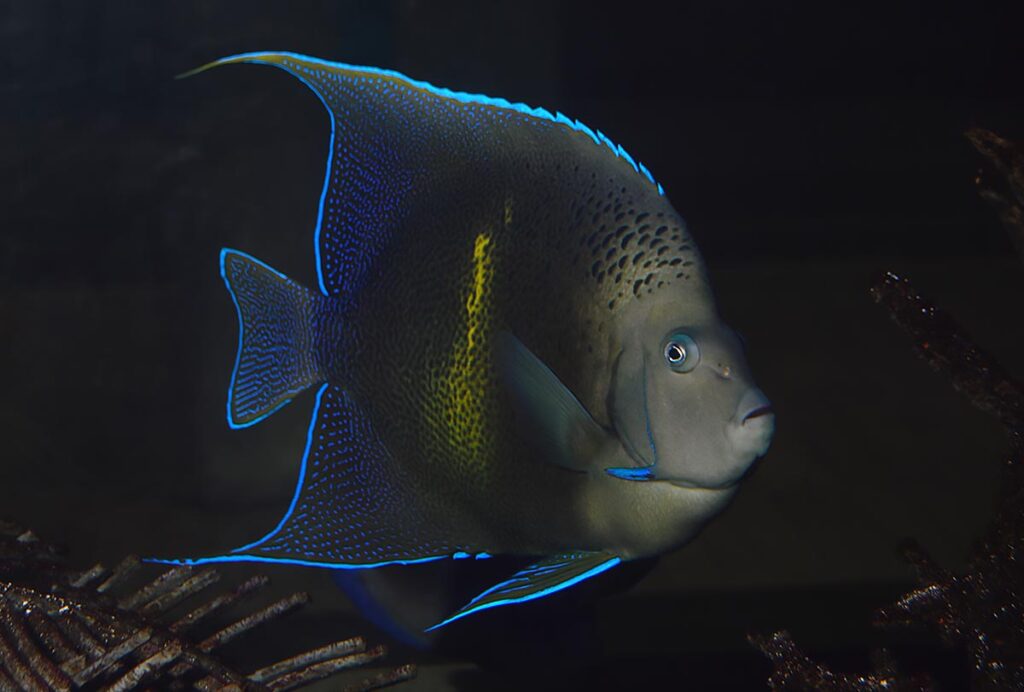
This magnificent fish, bedazzled with intricate electric blue patterning on all its fins (except the pectorals), was a hidden gem in what otherwise might have been written off as just a publicly viewable, fish-only aquarium.
Update: Tim Morrissey of the Henry Doorly Zoo and Aquarium in Omaha, NE, noted that this amazing angelfish was formerly on display at The Florida Aquarium itself, and in recent years must have been moved to this location from the main aquarium.
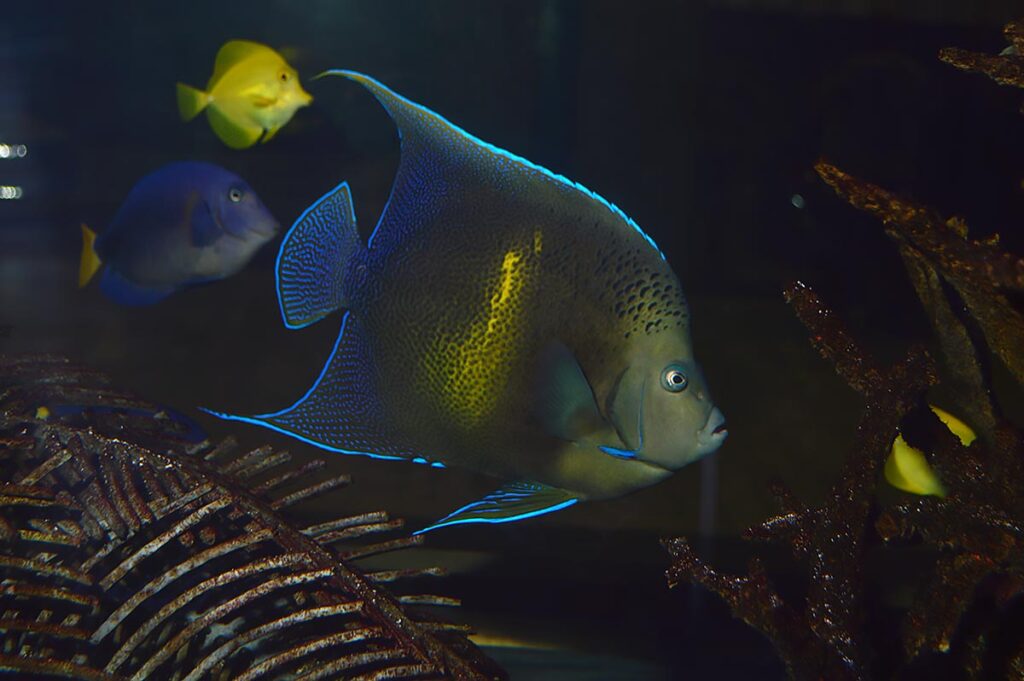
I have no idea if or when I’ll ever pass through Tampa International Airport next, particularly as the Covid-19 pandemic continues to rage, discouraging all non-essential travel. If I happen to find myself in Tampa again, you can be sure I’ll make it a point to find this aquarium in the Blue Baggage Claim area so I can check in on this rare fish. If you happen to pass through, please check back with us and tell us (in the comments!) how this amazing captive-bred hybrid angelfish is doing!





I was in Tampa airport also in February 2020. I too recall seeing this fish and thinking that it was an oddball Asfur angelfish.